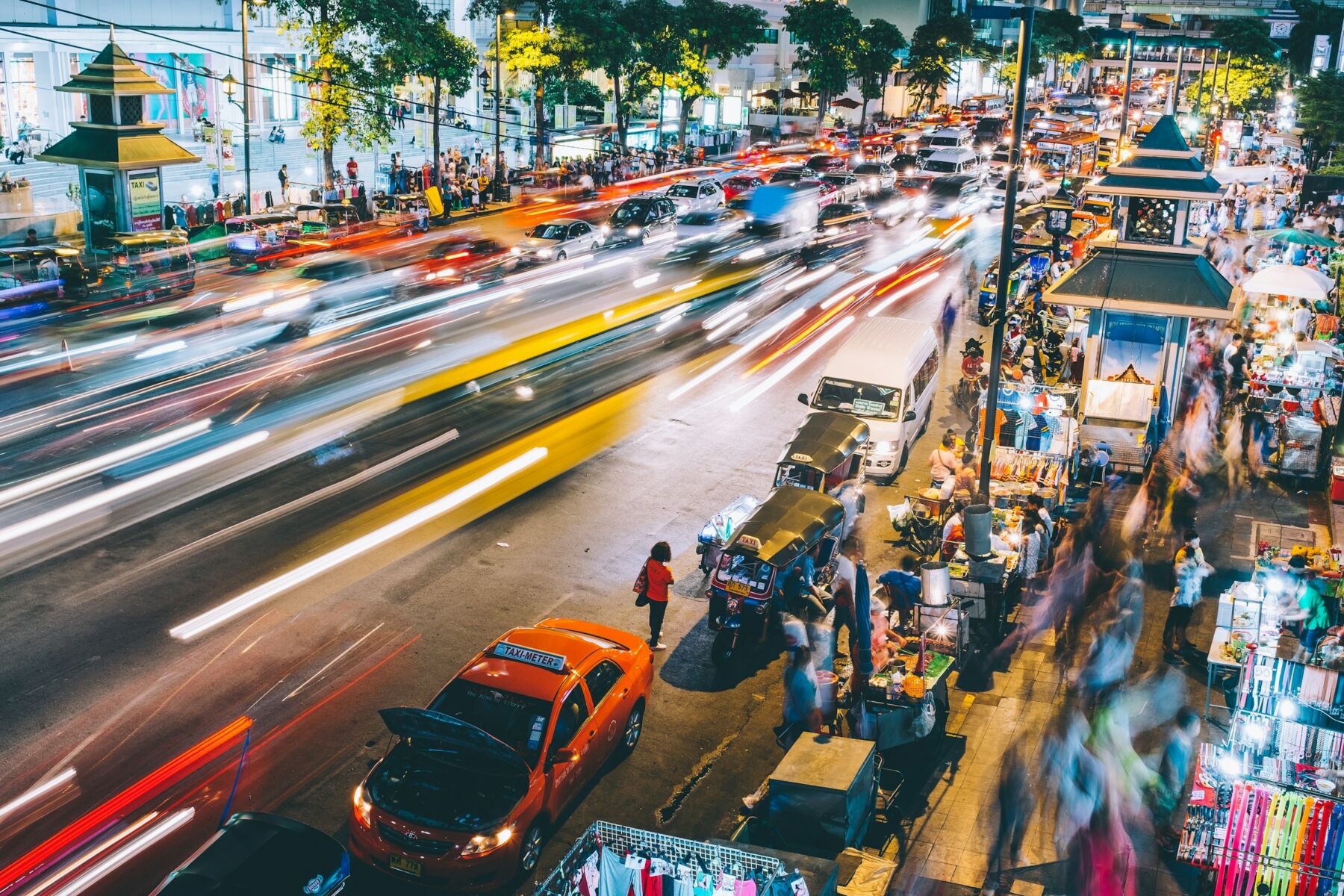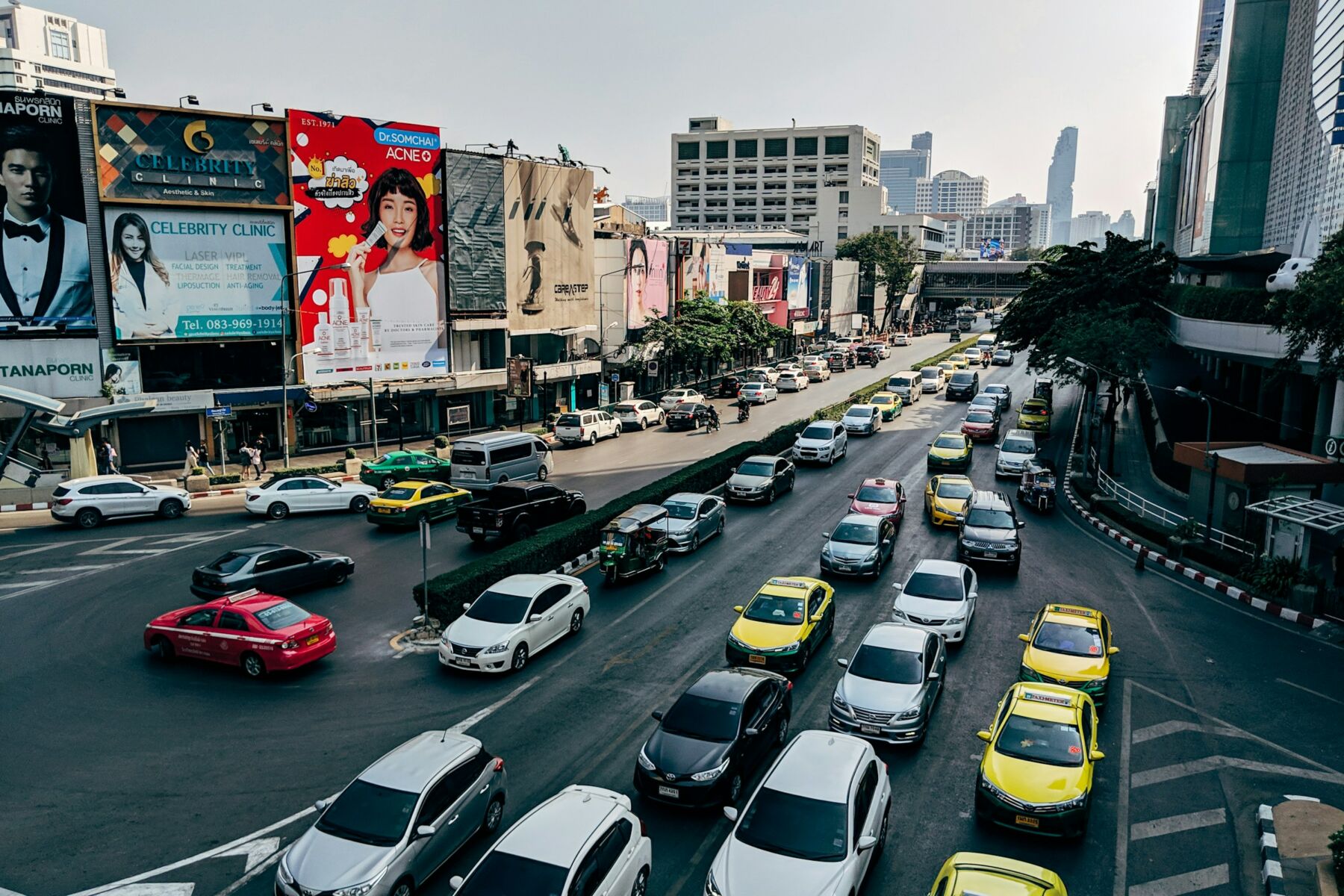Is driving safe in Thailand?

Thailand, with its stunning beaches, vibrant nightlife, and delectable cuisine, beckons travellers from around the globe. Yet, beneath this paradise lies a stark reality that often goes unnoticed – the safety of driving on its roads. Despite the allure of exploring this beautiful country on a moped or scooter, the question of safety looms large.
Navigating Thailand’s roads comes with its own set of challenges, from bustling traffic to unpredictable driving behaviours. The country’s road safety record is alarming, placing it as the second most dangerous place in the world for drivers. This raises a crucial question for anyone looking to drive in Thailand: How safe is it? Let’s delve into the facts and tips to understand what you’re up against when taking the wheel in this breathtaking yet perilous paradise.

Important driving regulations
When embarking on a journey through Thailand’s bustling streets or scenic countryside roads, understanding and adhering to the local driving regulations is crucial for ensuring your safety and the well-being of others. Let’s dive into the key rules of driving in Thailand that are essential to know.
Driving on the left side of the road
In Thailand, just like in the UK, vehicles navigate on the left side of the highway, a vital rule for maintaining order and safety first on the roads. For drivers from countries where the norm is the opposite, this can initially pose a challenge. Practice and heightened awareness will help you acclimate to this change smoothly, ensuring a safer driving experience in Thailand.
Highway speed limits
While venturing on Thai highways, it’s important to keep an eye on the speedometer. The speed limits fluctuate between 80 km per hour and 120 km per hour, depending on the specific highway section. Adherence to these limits is not just about obeying the law; it’s about ensuring safety first on these fast-paced roads. Here’s a quick overview:
| Highway Section | Speed Limit (km per hour) |
|---|---|
| General | 80 – 120 |
| Fast Lane | >90 or 100 (Depending on rules) |
City speed limits
Navigating through Thailand’s urban areas presents a different set of challenges, with speed limits generally capped at 80 km per hour on major roads. However, in residential neighbourhoods and smaller streets, your pace should not surpass 30 km per hour. These limits are in place to safeguard pedestrians and other road users in densely populated areas.
Vehicle right of way
Understanding who has the right of way is pivotal in avoiding accidents. In Thailand, right-of-way practices can sometimes seem ambiguous, especially compared to what you might be used to. The key to remember is always to approach situations with caution and be prepared to yield, bolstering safety first in ambiguous right-of-way situations.
Lane markings
Lane markings are there to guide and protect you. Paying attention to these markings is not only about following the rules of driving in Thailand; it’s about ensuring your journey’s safety and efficiency. Whether it’s keeping to your lane or knowing when it’s safe to overtake, heed these signs for smooth navigation.
Stop signs
Stop signs in Thailand serve the same purpose as anywhere else – they signal the need to halt completely before proceeding. It’s essential to come to a full stop, look both ways and ensure the way is clear. This simple yet crucial rule is vital for preventing accidents at intersections.
Intersections without stop signs
At intersections lacking stop signs, exercise even greater caution. Slow down as you approach, look out for oncoming traffic from all directions, and proceed only when you’re confident it’s safe to do so. Remember, in scenarios where the rules of driving in Thailand might seem less clear, prioritising safety first is always the best course of action.
Challenges
When embarking on a journey through Thailand’s bustling streets and serene countryside roads, prioritising your safety is paramount. As you navigate through this vibrant country, being attuned to the unique challenges of driving in Thailand ensures an enjoyable and secure experience. Here’s what you need to know.
Traffic
Thailand’s urban sprawl, notably in cities like Bangkok and Chiang Mai, showcases a dynamic tapestry of vehicles, from tuk-tuks weaving through lanes to cars inching forward in congestion. Traffic can be daunting, underscoring the necessity of vigilance and patience. Remember, adherence to the rules of driving in Thailand not only keeps you safe but also contributes to the orderly flow amidst chaos. Maneuvering through such density demands an anticipatory approach, always being ready for the unpredictability of stop-and-go movement.

Be aware of motorbikes on the road
Motorbikes, the lifeblood of Thai roads, zip through traffic with an agility that can catch many drivers off guard. They often appear from unexpected angles, particularly in your blind spots or when you’re about to change lanes. Your mirrors are your best friends here. Regular checks and signaling your intentions well in advance mitigate risks, safeguarding both you and the plethora of motorbike riders sharing the road with you. It’s a shared responsibility where safety first is the guiding principle.
Soi dogs
An aspect of driving in Thailand that might catch you by surprise is the presence of Soi Dogs. These free-roaming canines are a common sight, often wandering onto roads with little caution. While they add to the local charm, they also present a hazard for drivers. Slowing down in residential areas or when you spot animals on the road can prevent accidents. Keeping a gentle foot on the brake and staying alert in areas where animals are likely to cross is a part of responsible driving practices in Thailand.
Parking on the street
Finding a spot to park on Thailand’s crowded streets, especially in tourist hotspots or near popular attractions, can seem like a quest for a golden ticket. Yet, street parking is an art one quickly learns. Observing local signage and rules avoids the inconvenience of fines or towing. In many areas, parking regulations align with safety measures, ensuring that parked vehicles do not obstruct traffic flow or emergency access. Being mindful of where you leave your car not only respects local regulations but also contributes to the orderly and safe utilisation of public spaces.
As you adapt to the rhythm of Thai roads, these challenges become part of the adventure. Staying informed, cautious, and respectful towards all road users ensures a journey that is safe and rich with experience. Driving in Thailand, when approached with the right attitude and preparation, unveils the country’s beauty in its most authentic form.

Additional driving tips and tricks
Driving in Thailand can be a unique experience, but with the right approach, it’s entirely manageable. Remember, staying informed about local driving regulations is key to navigating the roads safely. Paying close attention to lane markings and being mindful of motorbikes and Soi Dogs will also help you avoid unnecessary complications. Moreover, mastering the art of street parking in bustling areas can save you a lot of time and stress. By being cautious, respectful, and prepared, you’ll find that driving in Thailand isn’t just about getting from A to B—it’s about enjoying the journey safely. Keep these tips in mind, and you’re all set for a smooth ride.
Latest Thailand News
Follow The Thaiger on Google News:


























